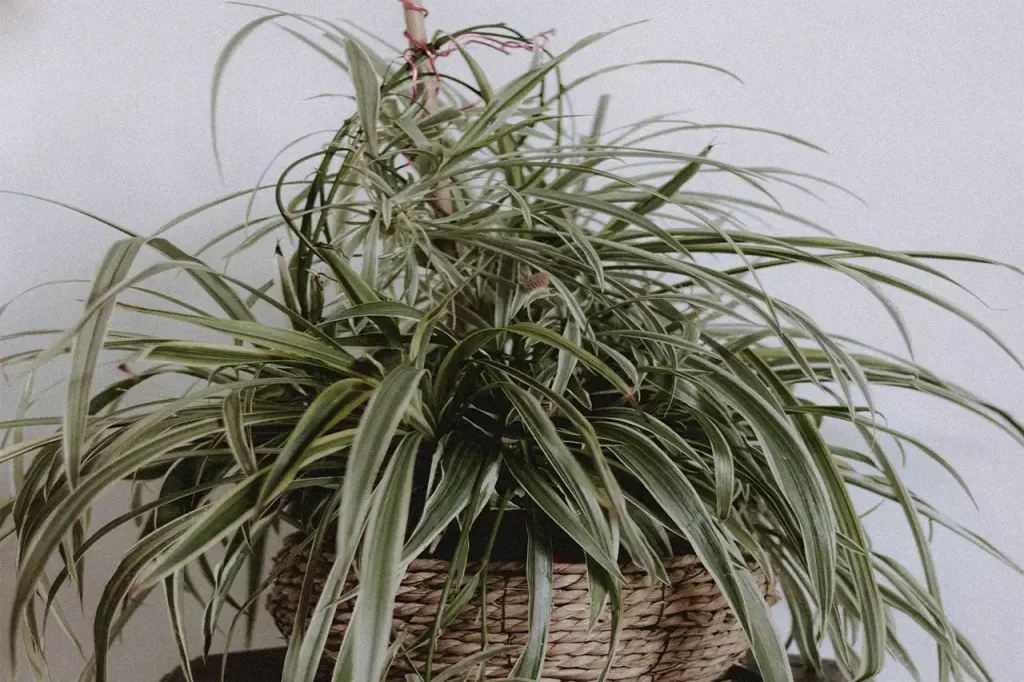
The Spider plant is the commonly variegated (having different color zones in its parts) and flowering plant. Its leaves’ length ranges from 6 to 20 inches. Spider Plant belongs to the monocotyledonous group (having parallel leaf veins and petals in an arrangement of multiples of 3) of plants with an angiosperm origin.
The scientific name for Spider Plant is Chlorophytum comosum family Asparagaceae. In this family, rhizomatous and thick roots plants are developed which are prominent characteristics of these herbaceous plants[1]Sanyaolu, V.T., R.O. Awodoyin, and S. Ogunyemi, A Survey of the Most Common Ornamental Plants in Southwest Nigeria. Pacific Journal of Science and Technology, 2018. 19(1): p. 334-343..
The roots of Chlorophytum comosum are tuberous and fleshy. The length of its tubers is approximately 2 to 8 cm and its thickness is about 30 millimeters. Spider Plant is 60 to 65 cm tall. Leaves appear to be in an arching way and can be 1 to 2 feet in length.
Chlorophytum is a plant genus. It consists of more than 200 species. All species are ever-green and perennial and flowering plants. Within these species, several cultivars are also present[2]Vasconcellos-Neto, J., et al., Spider–plant interactions: an ecological approach, in Behaviour and ecology of spiders. 2017, Springer. p. 165-214..
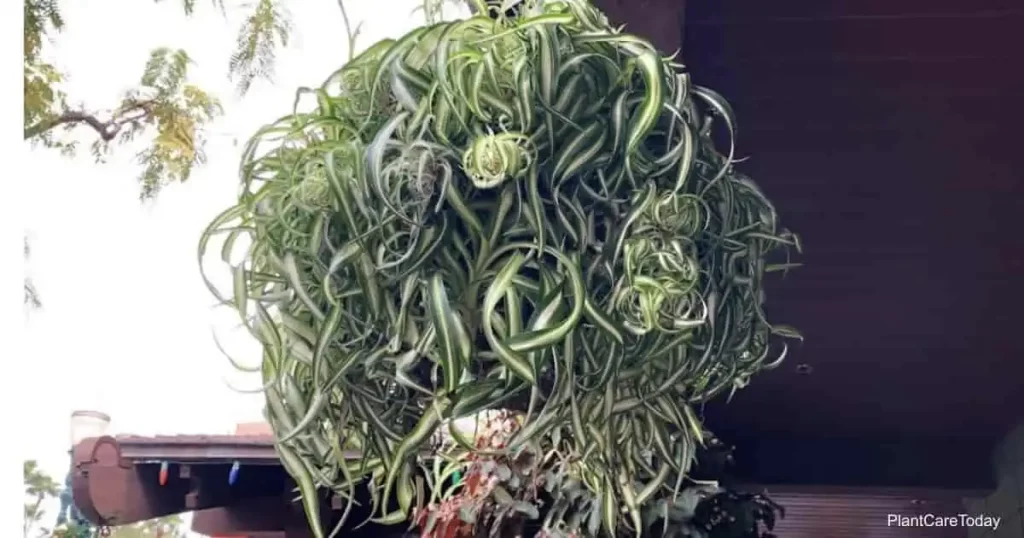
Ecology of Spider Plant
Tropical regions and most areas of Southern Africa are the places where Spider Plants are commonly found. Despite these regions, this plant is now seen in almost every continent of the World as it has neutralized its presence in most areas of the world such as Australia and Asia[3]Omondi, E.O., et al., Nutritional compound analysis and morphological characterization of spider plant (Cleome gynandra)-an African indigenous leafy vegetable. Food Research International, 2017. 100: … Continue reading.
Airplane Spider Plant
Several common names are also associated with Spider Plant i.e. Ribbon Plant, Ivy Plant, and Airplane Plant. They are called Airplane Plants because the leaves of new and young plantlets give the appearance of propellers of airplanes.
The name Ribbon Plant is given because of its color stripe lines and their specific pattern. Variegation is observed in all of the species which are in correlation with specific patterns. Three different types of variegation patterns are found in the Airplane Spider Plant[4]Mandal, R. and N. Yadav, Plant: A Natural Purifier of Environment..
Flowers of Spider Plant
The flowers of the Spider Plant are usually white. Pink flowers are also found in other species. The flowering season of Spider Plant is in summer or spring-fall.
They have petals inset of multiple of 3. Flowering is only initiated in mature plants. In this case, flowering only starts after 3 to 5 years. Flowers of Spider Plant are bisexual[5]Wangolo, E.E., et al., Effects of shoot tip and flower removal on growth and yield of spider plant (Cleome gynandra L.) in Kenya. Journal of Experimental Agriculture International, 2015: p. 367-376..
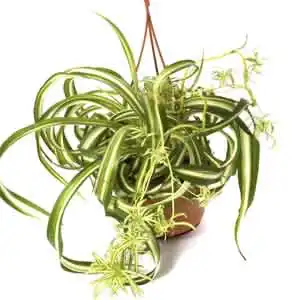
Ornamental air-cleaning indoor plant
As an indoor plant, it is most widely used as a decorative plant. Many benefits are related to this species such as air cleaning. The perennial flowering Spider Plant is easy to grow and very simple to take care of. It can grow in pots as well as in hanging positions.
In the hanging position, it can show growth of about several feet in descending posture. These are non-poisonous plants. Hence their non-toxicity enables us to plant Chlorophytum comosum near people and pets such as cats and dogs[6]Kwarteng, A., et al., Current knowledge and breeding perspectives for the spider plant (Cleome gynandra L.): a potential for enhanced breeding of the plant in Africa. Genetic Resources and Crop … Continue reading.
Air fumes or volatiles such as xylene and formaldehyde are absorbed by this amazing plant. Providing us with clean and healthy air inside our house[7]Omondi, E.O., et al., Nutritional compound analysis and morphological characterization of spider plant (Cleome gynandra)-an African indigenous leafy vegetable. Food Research International, 2017. 100: … Continue reading[8]Wangolo, E.E., et al., Effects of shoot tip and flower removal on growth and yield of spider plant (Cleome gynandra L.) in Kenya. Journal of Experimental Agriculture International, 2015: p. 367-376..
Propagation and Growth of Spider Plant
Spider Plant prefers their native and preferable environment to grow rapidly. When you provide it with such an environment mimicking a tropical atmosphere their growth shows quite an enhanced growth level.
Despite their native environmental conditions, these can survive in a variety of conditions. These can survive even for several days without being looked after[9]Zorde, M., et al., Selection for delayed flowering time in response to long photoperiod to increase vegetative growth and multiple harvests in spider plant (Cleome gynandra). Journal of Medicinally … Continue reading.
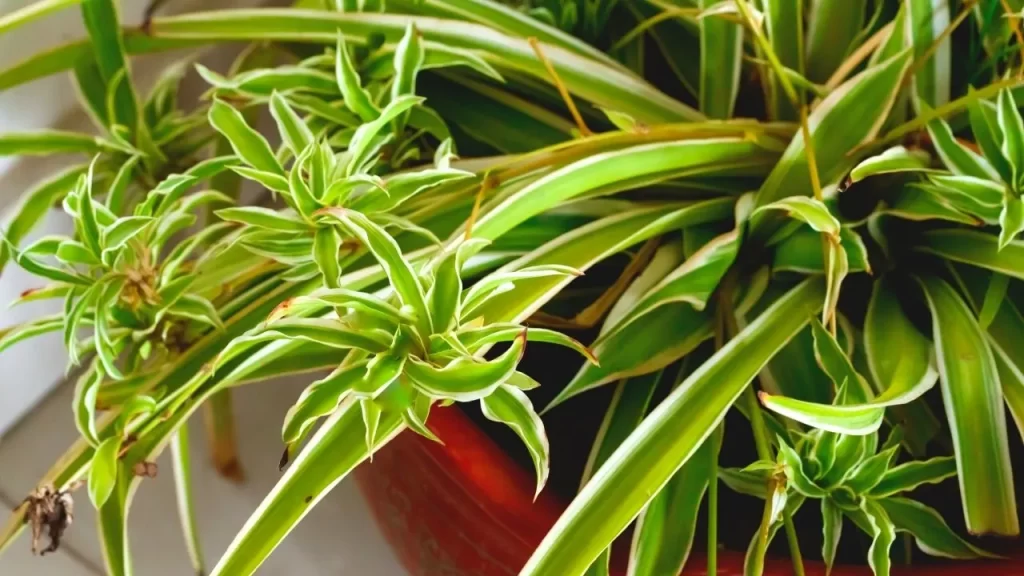
The mature Spider Plant is associated with giving rise to relatively long stem heads that bear a number of flowers over themselves. The flowers are usually star-shaped.
When they fall off from the mature stem of the Spider Plant, give rise to new baby plants. New roots are developed at the place of flower fall. Keep them safe from frost unless these plantlets die[10]Somers, B., et al., Elemental Micronutrients, Antioxidant Activity, Total Polyphenol, and Total Flavonoid Content of Selected African Spider Plant Accessions (Cleome gynandra) Grown in Eastern Africa … Continue reading.
Baby Spider Plant
An amazing and significant property related to the Baby Spider Plant is that it can further give rise to several more baby plants. Which is quite an uncommon characteristic of other ornamental indoor plants.
The roots are developed further from baby Spider Plants followed by shoot development. In a very short period of time, all the areas are covered with new plantlets[11]Rae, W.A. and D.A. Stieber, Plant play therapy: Growth through growth. Journal of Pediatric Psychology, 1976. 1(4): p. 18-20..
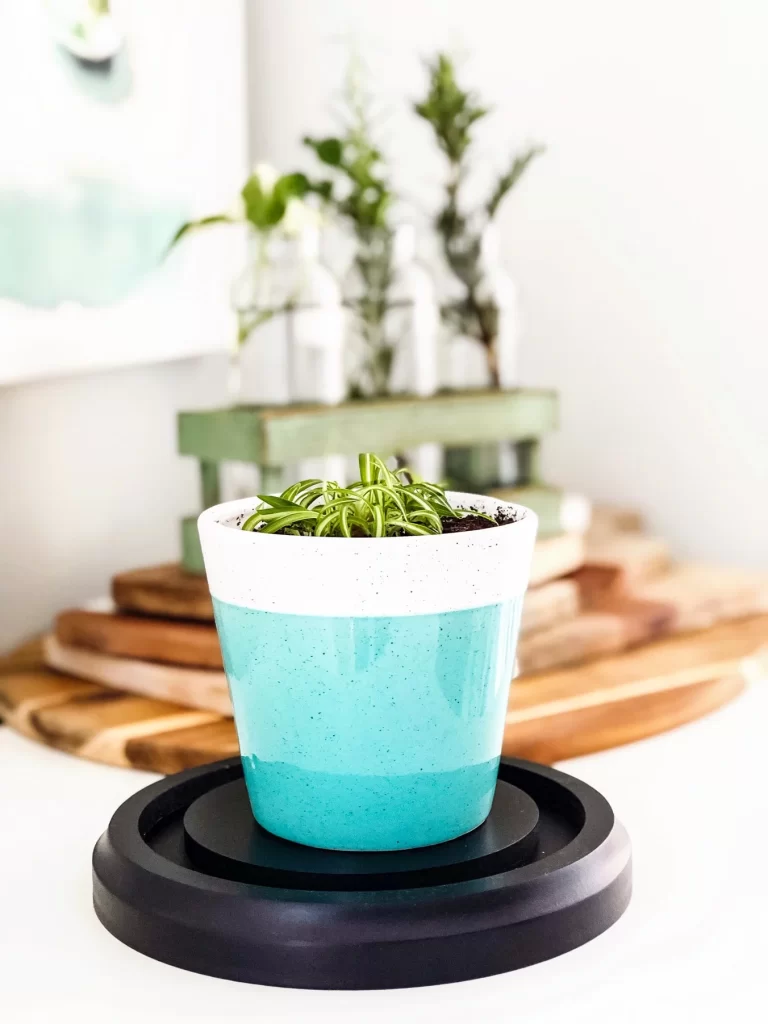
Propagation of Spider Babies
1. Cutting of Baby Spider plants
If the mother plant has baby plants with roots too, one can easily remove baby plants by cutting them along with their roots and planting them in some other pot with nutrition-rich loamy, and moist soil. Avoid direct bright sunlight and water properly.
2. Water plantations
In another case, when the roots of baby plants are not yet properly developed, we can cut these baby plants from the main flowering stem and allow the root area to make contact with water. A glass pot can be used for this purpose. Roots will shortly be developed for further plantation.
3. Direct potting of Spider Plant
The third method is also easy to handle. In this method, one needs to plant a baby plant into nearby soil while it is still attached to the main flowering stem[12]Chandraju, S., et al., IMPACT OF DISTILLERY SPENT WASH IRRIGATION ON SPROUTING GROWTH AND YIELD OF JASMINE (OLEACEAE) FLOWERING PLANT. Int. J. Curr. Res. Chem. Pharm. Sci, 2016. 3(6): p. 30-36..
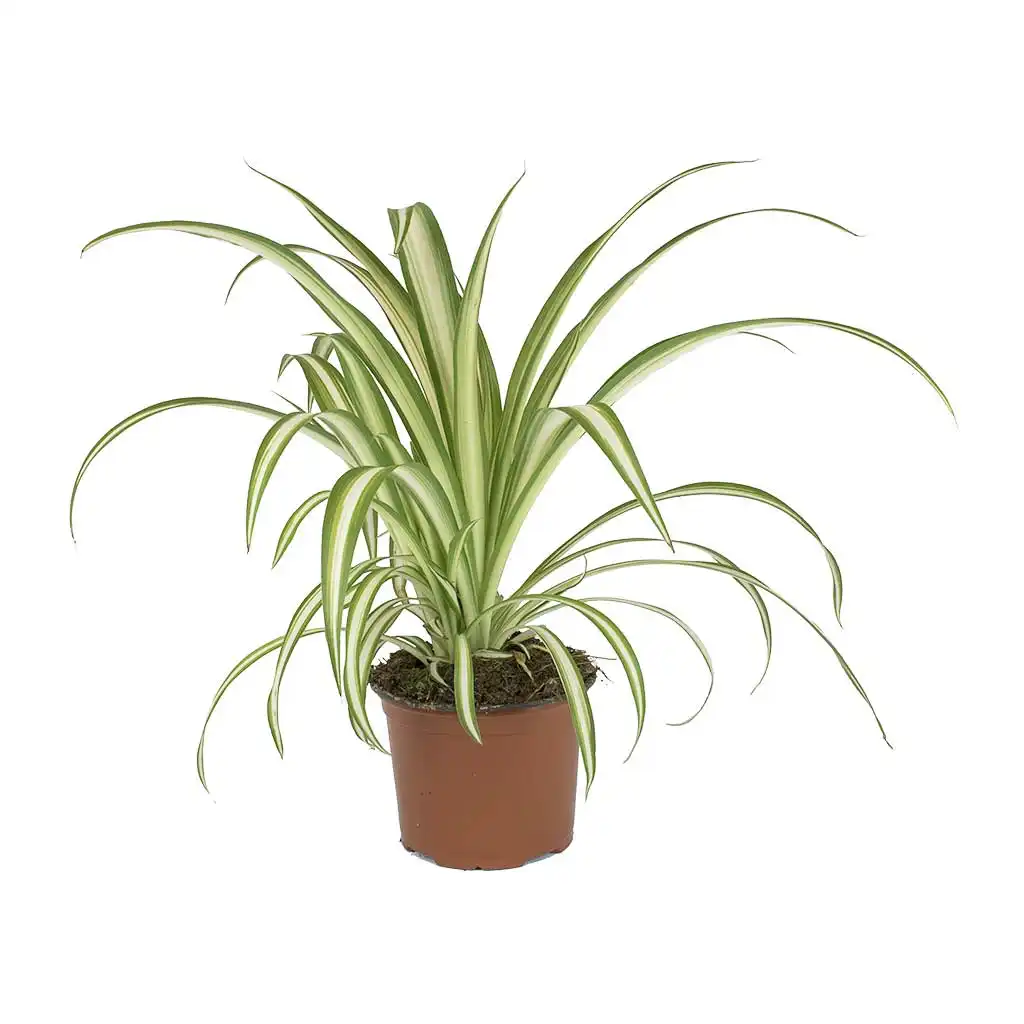
Pink Spider Plant
The term Azalea is devoted to all the 1000 species of this group. This means pink spiders. Rhododendron is specified for these enormously large flowering plants. Mostly pink and large flowers are bloomed in the spring season.
Varieties of Spider Plant
Different cultivars and varieties are present due to their variegation pattern. Famous varieties are discussed below.
1. Hawaiian
Chlorophytum comosum Hawaiian is abundantly found in Hawaii. The distinctive feature of this species is that there is a different kind of variegation pattern in both immature or baby plants and mature plants. Variegation with lighter colors is present in the young plants whereas variegation with dark and brighter colors is found in mature plants[13]Macnish, A.J., R.T. Leonard, and T.A. Nell, Sensitivity of potted foliage plant genotypes to ethylene and 1-methylcyclopropene. HortScience, 2011. 46(8): p. 1127-1131..
2. Spider Vine
Spider plantlets when grown on a pot hanging on the wall, the stem of the mother spider plant bends over. New spider baby plantlets and flowers drop down like a bunch of grapes or like a web network[14]Moyo, S., et al. Effects of cooking and drying on the total phenolic, total flavonoid content, antioxidant, and antibacterial activity of Cleome gynandra (Spider plant). in International Conference … Continue reading.
3. Ocean Spider Plant
The perfect species for hanging decoration is the Ocean Spider Plant. It shows compact growth when it is kept in a hanging pot. These have off-white to creamy margins with a bright and dark green center making them more attractive to others.
Its stems have specific names runners. Baby plantlets are gown between runners. Flowers are white[15]Polis, G.A. and S.D. Hurd, Extraordinarily high spider densities on islands: flow of energy from the marine to terrestrial food webs and the absence of predation. Proceedings of the National Academy … Continue reading.
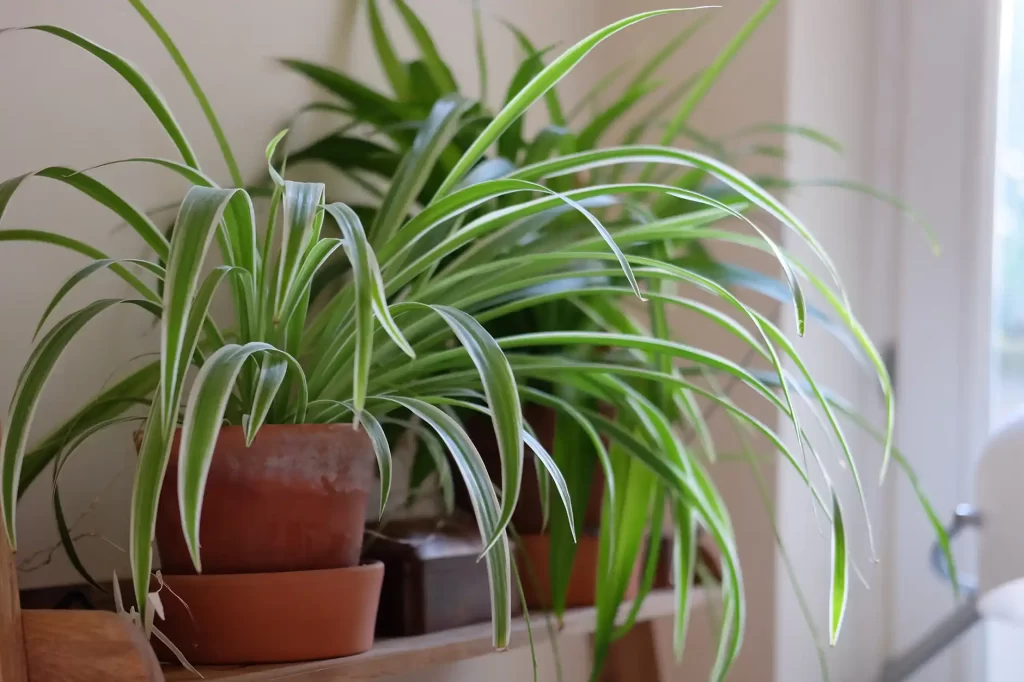
4. Variegatum
The scientific name of this variety is Chlorophytum Comosum Variegatum. In this cultivar dark green central broad line is present. This central thick dark green line is lined by light green to pale yellow boards. The most common cultivar is the Variegatum type.
5. Bonnie
This cultivar is known as Chlorophytum Comosum Bonnie. It has variegation with dark green and light green. The specificity of this type of cultivar is its curly leaves. There is a tendency to fold leaves. These curls make the plant look messy.
6. Vittatum
Chlorophytum Comosum Vittatum is the most famous cultivar. The center of variegation is white and lined with medium green color. Its mature plant produces more baby Spider Plants per stem. The color of baby clusters is from yellow to white[16]Wang, F., et al., Effects of cadmium stress on growth and cadmium enrichment of Chlorophytum comosum and Chlorophytum comosum var. variegatum. Ying Yong Sheng tai xue bao= The Journal of Applied … Continue reading[17]Chen, J., D.B. McConnell, and R.J. Henny. LIGHT INDUCED COORDINATIVE CHANGES IN LEAF VARIEGATION BETWEEN MOTHER PLANTS AND DAUGHTER PLANTLETS OF CHLOROPHYTUM COMOSUM’VITTATUM’. in VII … Continue reading.
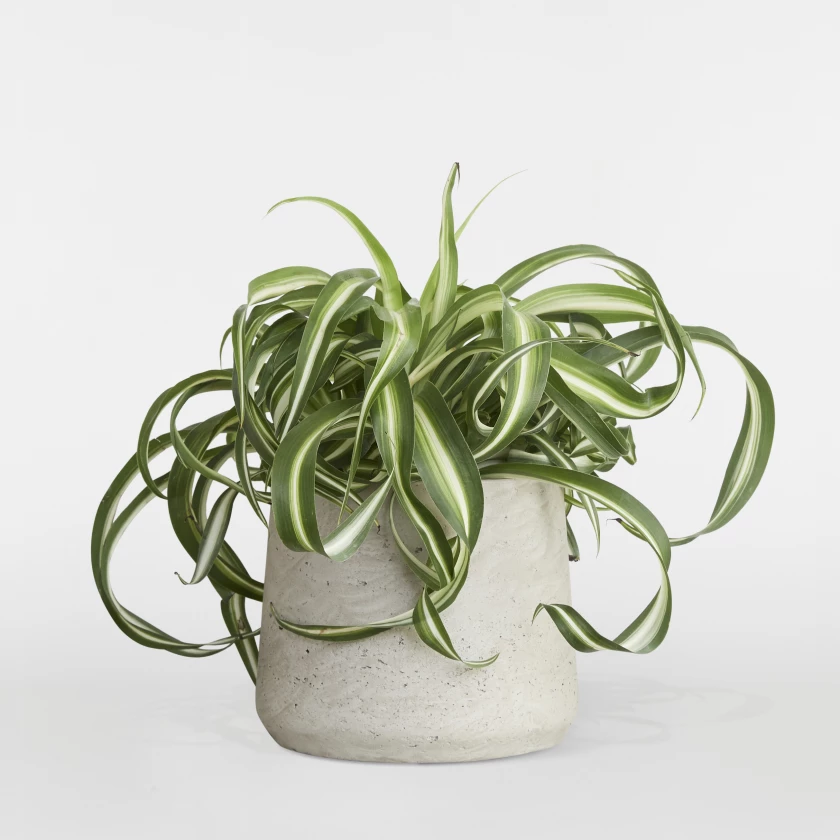
Care of Spider Plants
1. Soil conditions for Spider Plant
For proper flowering, the soil is loamy soil with neutral pH. The soil must have some qualities such as well-draining soil with a rich amount of nutrients is the best for the growth of the Spider Plant. Usual garden soil is not much preferred for its growth.
2. Watering of Spider Plants
Watering is to be done with gaps. New plantlets require plenty of water but adult and mature plants need water less often. One must water the plant when the upper ¼ area or pot soil is completely dried or seems to be getting dry.
3. Light requirement
Direct sunlight may burn the baby Spider plantlets. To avoid this consequence, keep plants in the bright areas that receive plenty of sunlight indirectly. Variegations can be changed due to direct sunlight. Decreasing the attractiveness and beauty of the Spider Plant[18]Trinklein, D.H., Caring for houseplants (2010). 2010..
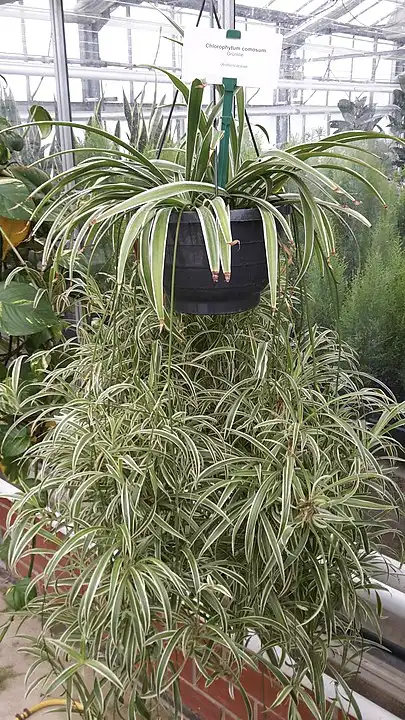
Caring Spider Plants
There are some points to be taken care of in the case of gardening Spider Plants as an indoor ornamental plant.
- Fertilizers have to be added in the growing season of Spider Plants. This can be done by using leafy humus.
- Foliage damage can be prevented by keeping Spider Plant away from direct sunlight exposure.
- Avoid over-watering the soil. Let the previous watering get dried first.
- Repotting can enhance the growth and expansion of the Spider Plant. As spring is its growing season, repotting is preferred in this season.
- Humidity is not an important factor against Spider Plant.
- Curly Spider plants also need to be watered properly after the drying interval. They can grow in low light too but the long periods of low light will make them grow weak.
- Room temperature, which is usually warm and typically less humid is an effective key to growth[19]Hillock, D. and D. Needham, Houseplant Care. 2006..
Benefits of spider plants
- They help in cleaning our polluted air atmosphere.
- Many chemicals are being extracted like saponins, helping pharmaceutical companies.
- These are edible and nontoxic.
- They do not need much care. And keep the air moist and humid.
- Extensively used for home decoration.
- They help in absorbing polluted irritants and ozone from the air[20]Rohit, S., et al., Saponin: a wonder drug from Chlorophytum species. Global Journal of Research on Medicinal Plants & Indigenous Medicine, 2012. 1(10): p. 503..
References
| ↑1 | Sanyaolu, V.T., R.O. Awodoyin, and S. Ogunyemi, A Survey of the Most Common Ornamental Plants in Southwest Nigeria. Pacific Journal of Science and Technology, 2018. 19(1): p. 334-343. |
|---|---|
| ↑2 | Vasconcellos-Neto, J., et al., Spider–plant interactions: an ecological approach, in Behaviour and ecology of spiders. 2017, Springer. p. 165-214. |
| ↑3, ↑7 | Omondi, E.O., et al., Nutritional compound analysis and morphological characterization of spider plant (Cleome gynandra)-an African indigenous leafy vegetable. Food Research International, 2017. 100: p. 284-295. |
| ↑4 | Mandal, R. and N. Yadav, Plant: A Natural Purifier of Environment. |
| ↑5 | Wangolo, E.E., et al., Effects of shoot tip and flower removal on growth and yield of spider plant (Cleome gynandra L.) in Kenya. Journal of Experimental Agriculture International, 2015: p. 367-376. |
| ↑6 | Kwarteng, A., et al., Current knowledge and breeding perspectives for the spider plant (Cleome gynandra L.): a potential for enhanced breeding of the plant in Africa. Genetic Resources and Crop Evolution, 2018. 65(5): p. 1529-1550. |
| ↑8 | Wangolo, E.E., et al., Effects of shoot tip and flower removal on growth and yield of spider plant (Cleome gynandra L.) in Kenya. Journal of Experimental Agriculture International, 2015: p. 367-376. |
| ↑9 | Zorde, M., et al., Selection for delayed flowering time in response to long photoperiod to increase vegetative growth and multiple harvests in spider plant (Cleome gynandra). Journal of Medicinally Active Plants, 2020. 9(2): p. 60-70. |
| ↑10 | Somers, B., et al., Elemental Micronutrients, Antioxidant Activity, Total Polyphenol, and Total Flavonoid Content of Selected African Spider Plant Accessions (Cleome gynandra) Grown in Eastern Africa and the Eastern United States. Journal of Medicinally Active Plants, 2020. 9(3): p. 157-165. |
| ↑11 | Rae, W.A. and D.A. Stieber, Plant play therapy: Growth through growth. Journal of Pediatric Psychology, 1976. 1(4): p. 18-20. |
| ↑12 | Chandraju, S., et al., IMPACT OF DISTILLERY SPENT WASH IRRIGATION ON SPROUTING GROWTH AND YIELD OF JASMINE (OLEACEAE) FLOWERING PLANT. Int. J. Curr. Res. Chem. Pharm. Sci, 2016. 3(6): p. 30-36. |
| ↑13 | Macnish, A.J., R.T. Leonard, and T.A. Nell, Sensitivity of potted foliage plant genotypes to ethylene and 1-methylcyclopropene. HortScience, 2011. 46(8): p. 1127-1131. |
| ↑14 | Moyo, S., et al. Effects of cooking and drying on the total phenolic, total flavonoid content, antioxidant, and antibacterial activity of Cleome gynandra (Spider plant). in International Conference on Advances in Science, Engineering, Technology & Natural Resources. 2016. |
| ↑15 | Polis, G.A. and S.D. Hurd, Extraordinarily high spider densities on islands: flow of energy from the marine to terrestrial food webs and the absence of predation. Proceedings of the National Academy of Sciences, 1995. 92(10): p. 4382-4386. |
| ↑16 | Wang, F., et al., Effects of cadmium stress on growth and cadmium enrichment of Chlorophytum comosum and Chlorophytum comosum var. variegatum. Ying Yong Sheng tai xue bao= The Journal of Applied Ecology, 2021. 32(5): p. 1835-1844. |
| ↑17 | Chen, J., D.B. McConnell, and R.J. Henny. LIGHT INDUCED COORDINATIVE CHANGES IN LEAF VARIEGATION BETWEEN MOTHER PLANTS AND DAUGHTER PLANTLETS OF CHLOROPHYTUM COMOSUM’VITTATUM’. in VII International Symposium on Protected Cultivation in Mild Winter Climates: Production, Pest Management and Global Competition 659. 2004. |
| ↑18 | Trinklein, D.H., Caring for houseplants (2010). 2010. |
| ↑19 | Hillock, D. and D. Needham, Houseplant Care. 2006. |
| ↑20 | Rohit, S., et al., Saponin: a wonder drug from Chlorophytum species. Global Journal of Research on Medicinal Plants & Indigenous Medicine, 2012. 1(10): p. 503. |



